I am seeing some strange behavior in r, trying to use ggplot.
I cannot recreate the problem with a sample dataset as i can't work out what the problem is with the dataset i am using. Essentially i have two variables from the same dataset and the aes is being applied to one but not the other.
This is the dataframe: temp
temp
# A tibble: 504 x 5
# Groups: continent [6]
continent year urban.pop predicted.estimated.pop pop
<chr> <int> <dbl> <chr> <dbl>
1 Africa 1950 32658962 estimated.pop 32658962
2 Africa 1955 41419217 estimated.pop 41419217
3 Africa 1960 53008425 estimated.pop 53008425
4 Africa 1965 66348577 estimated.pop 66348577
5 Africa 1970 82637370 estimated.pop 82637370
6 Africa 1975 103198989 estimated.pop 103198989
7 Africa 1980 128615954 estimated.pop 128615954
8 Africa 1985 160721947 estimated.pop 160721947
9 Africa 1990 200111296 estimated.pop 200111296
10 Africa 1995 241824184 estimated.pop 241824184
I want to plot this dataframe to look as follows:
ggplot(temp, aes(x = year, y = pop, col = continent, linetype = predicted.estimated.pop)) +
geom_line()
This looks right, but when i change y axis to plot urban.pop i get the following, where the linetype aes has not been applied:
ggplot(temp, aes(x = year, y = urban.pop, col = continent, linetype = predicted.estimated.pop)) +
geom_line()
As can be seen above, both pop and urban.pop are class: dbl. They are also identical:
sum(temp$pop - temp$urban.pop, na.rm = T)
[1] 0
The only thing i can note is that temp is a grouped df:
str(temp)
Classes ‘grouped_df’, ‘tbl_df’, ‘tbl’ and 'data.frame': 504 obs. of 5 variables:
$ continent : chr "Africa" "Africa" "Africa" "Africa" ...
$ year : int 1950 1955 1960 1965 1970 1975 1980 1985 1990 1995 ...
$ urban.pop : num 32658962 41419217 53008425 66348577 82637370 ...
$ predicted.estimated.pop: chr "estimated.pop" "estimated.pop" "estimated.pop" "estimated.pop" ...
$ pop : num 32658962 41419217 53008425 66348577 82637370 ...
- attr(*, "vars")= chr "continent"
- attr(*, "drop")= logi TRUE
- attr(*, "indices")=List of 6
..$ : int 0 1 2 3 4 5 6 7 8 9 ...
..$ : int 21 22 23 24 25 26 27 28 29 30 ...
..$ : int 42 43 44 45 46 47 48 49 50 51 ...
..$ : int 63 64 65 66 67 68 69 70 71 72 ...
..$ : int 84 85 86 87 88 89 90 91 92 93 ...
..$ : int 105 106 107 108 109 110 111 112 113 114 ...
- attr(*, "group_sizes")= int 84 84 84 84 84 84
- attr(*, "biggest_group_size")= int 84
- attr(*, "labels")='data.frame': 6 obs. of 1 variable:
..$ continent: chr "Africa" "Asia" "Europe" "LAC" ...
..- attr(*, "vars")= chr "continent"
..- attr(*, "drop")= logi TRUE
I can't work out why these two variables drive different results for the linetype aes. The reason I need to fix this is i have another variable in the original data set that is behaving the same way as urban.pop.
Can anyone explain this to me, or help resolve the problem?


